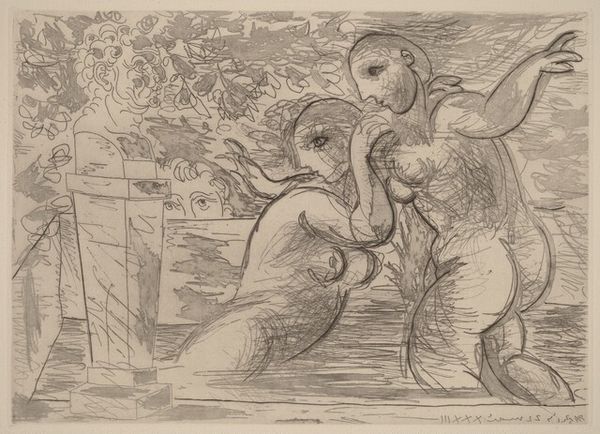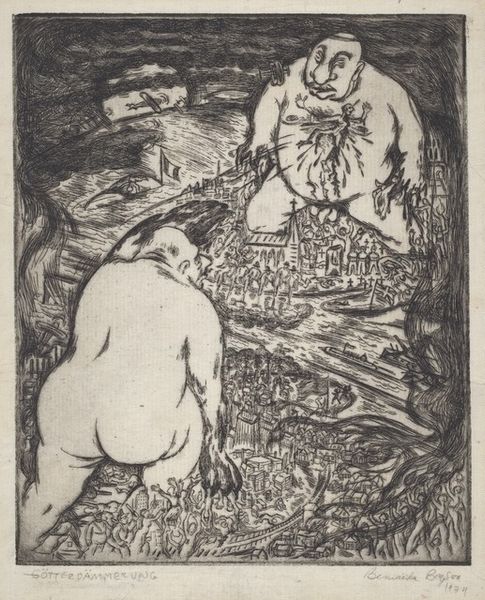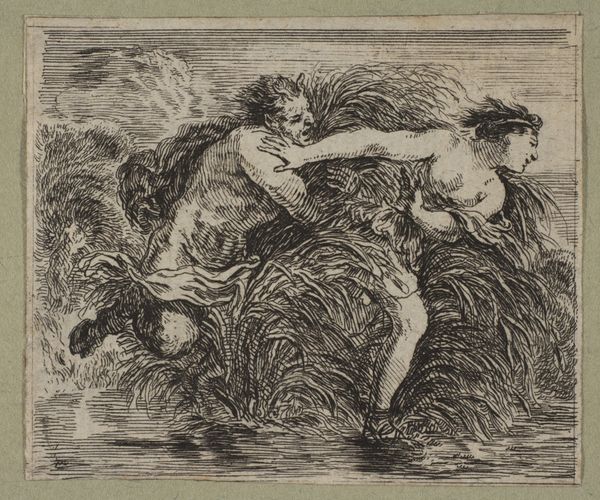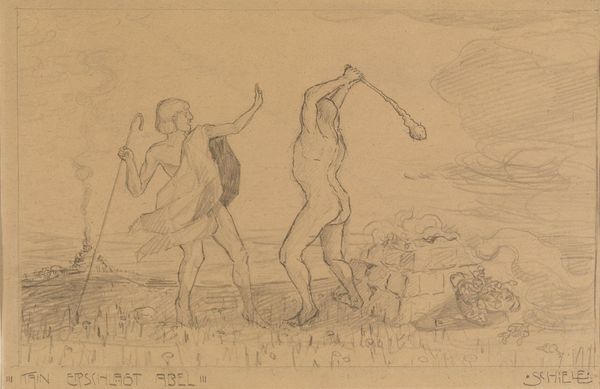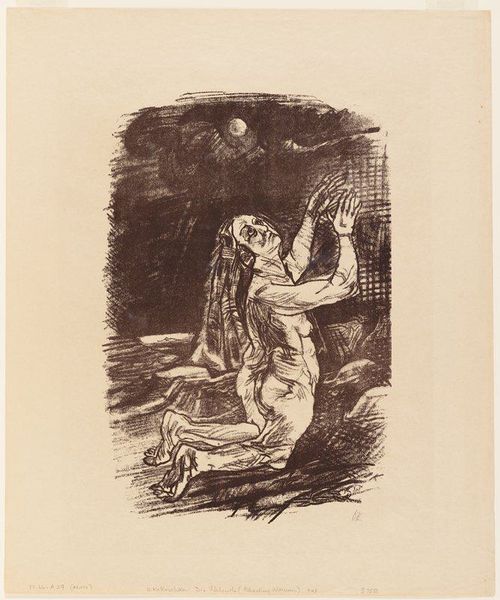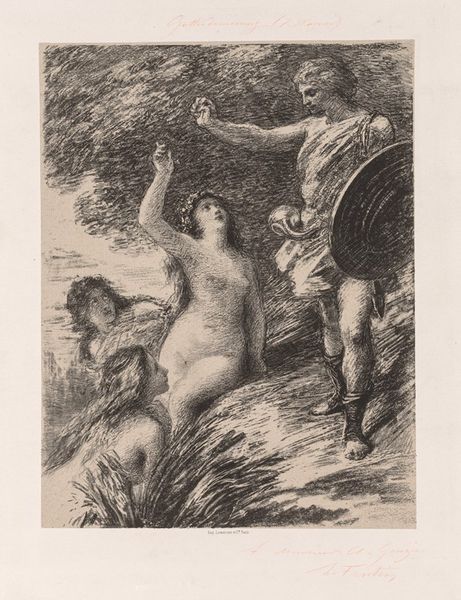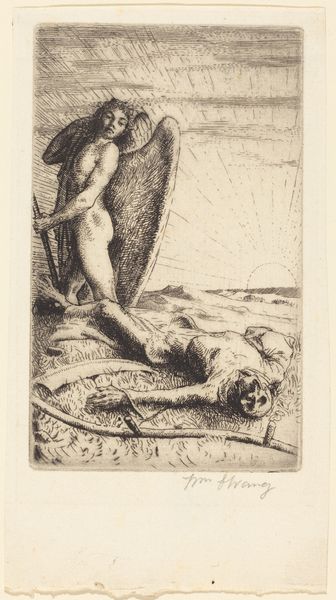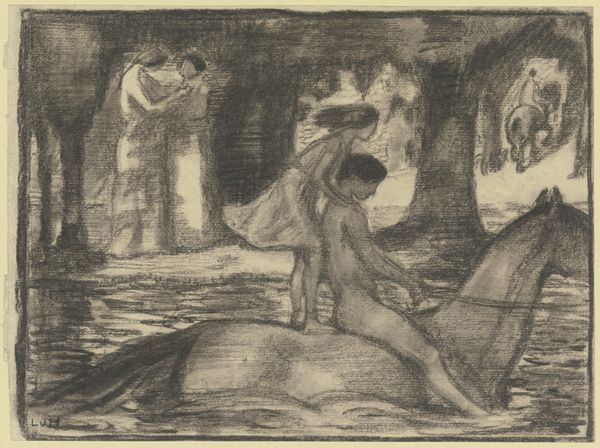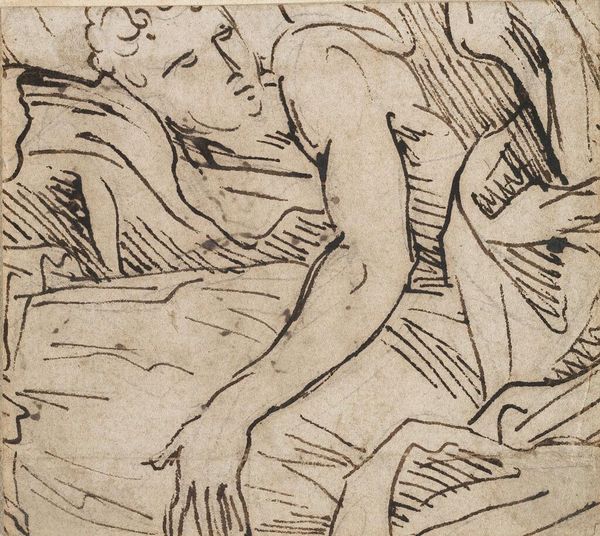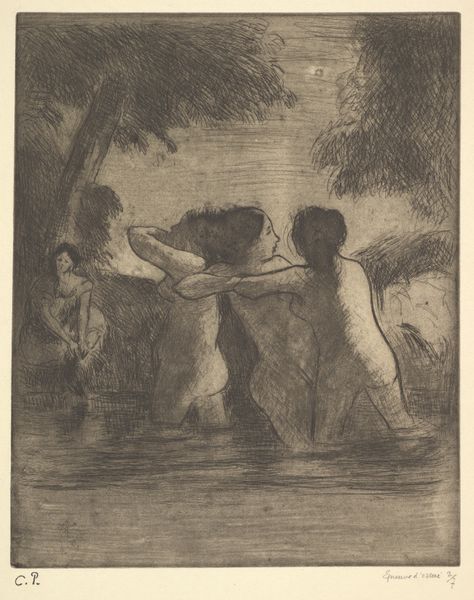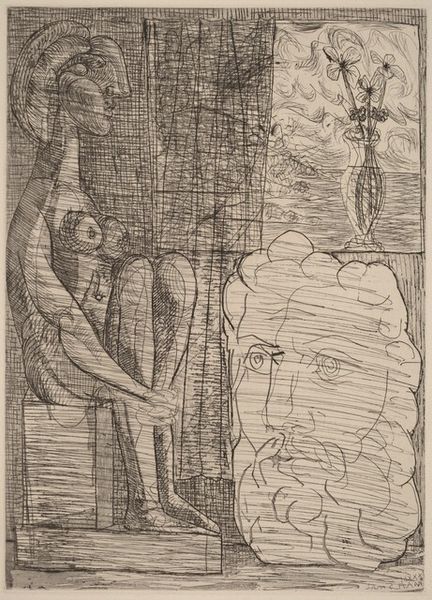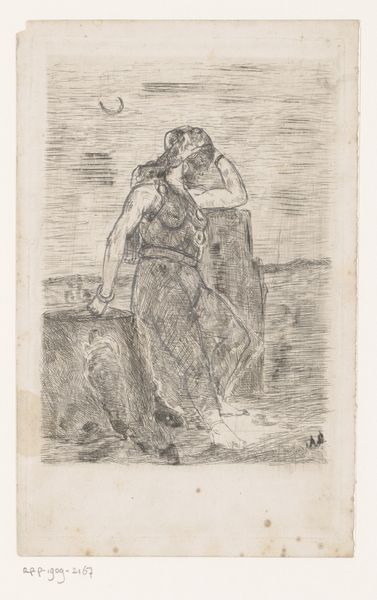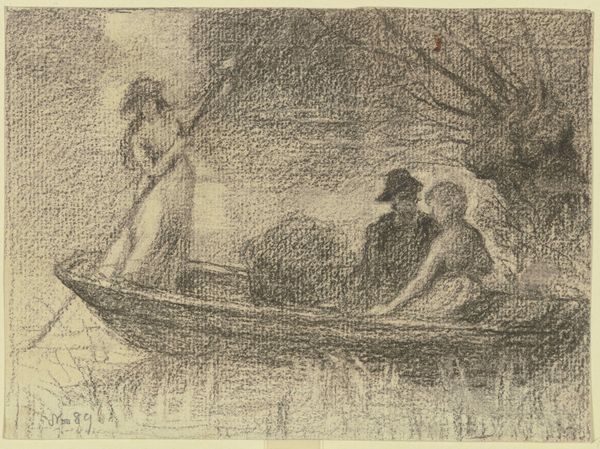
drawing, print, etching
#
drawing
#
narrative-art
# print
#
etching
#
landscape
#
figuration
#
line
Dimensions: Image:133 x 159mm Sheet:215 x 228mm
Copyright: National Gallery of Art: CC0 1.0
Editor: This is Hughie Lee-Smith's "The Kite Flyer," made in 1939. It’s an etching, so a black and white print. There’s this large figure in the foreground, seated, back to us, and another smaller figure standing to the side, and they’re both holding the strings of kites. It feels… desolate, almost unsettling. What do you see in it? Curator: The kites are an obvious starting point – such potent symbols of aspiration and freedom, of connecting with something beyond our immediate grasp. Yet, these figures are confined to a barren landscape. What does the image suggest if we see the kite strings as symbolic links between these figures, and the figures as metaphors for a wider societal experience? Editor: I hadn’t thought about them representing more than just themselves. What do you mean? Curator: Well, Lee-Smith was creating this work during the Great Depression, wasn’t he? And he was an African American artist navigating a segregated society. Does the image not speak to those constraints, the desire for freedom curtailed by harsh realities? Are the figures unable to communicate in a difficult setting? Editor: That’s a powerful reading. The landscape certainly reinforces that sense of isolation. And their backs are to us, so we don't really see their expression, it's almost like we're excluded from understanding. Curator: Exactly! And even the kites themselves are rather flimsy and precarious. Almost like fragile hopes or broken promises? This barren background recalls Giorgio de Chirico's landscapes where melancholic figures inhabit empty urban spaces, except here it’s rural desolation. Editor: It really makes you think about how personal hope intersects with a larger, sometimes bleak, historical context. It’s more than just a picture of kite flying. Curator: Precisely. The artist masterfully uses familiar, intimate images and simple lines to create a commentary on both our relationship with memory and to one another.
Comments
No comments
Be the first to comment and join the conversation on the ultimate creative platform.

